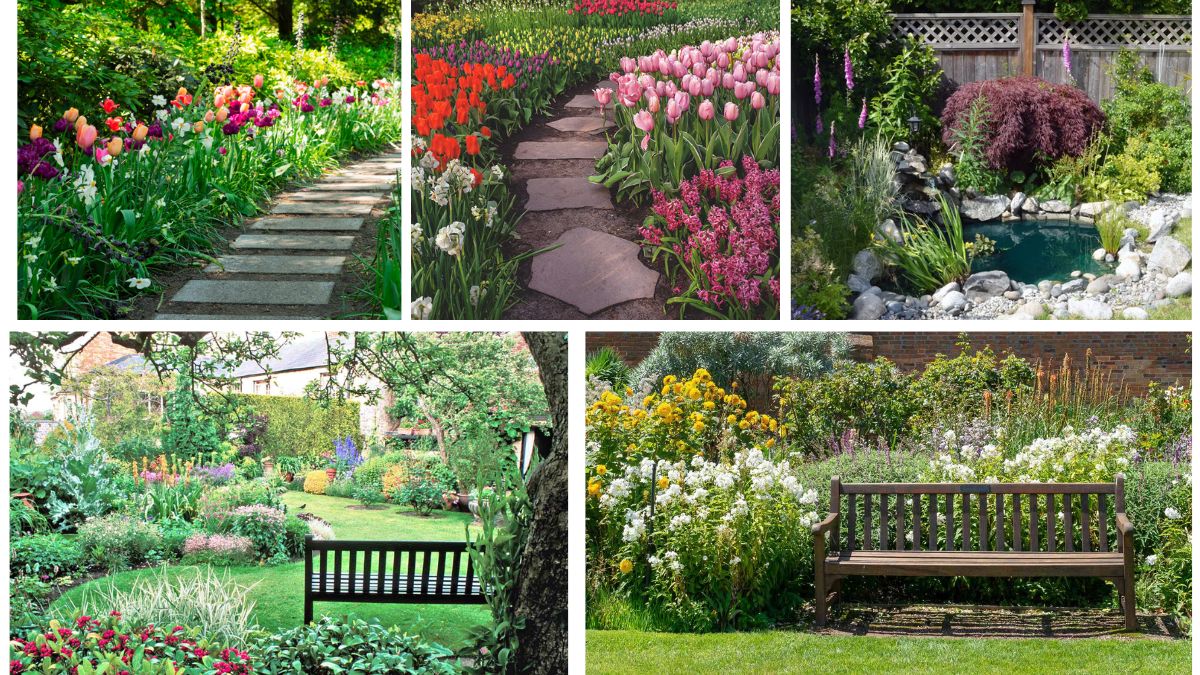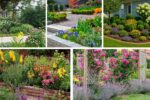When visitors step into your home or garden, one of the first features they notice is your walkway. Far from being just a functional path, walkways are opportunities to impress, welcome, and guide guests into your home. Adding carefully designed flower beds along walkways transforms them from simple paths into captivating journeys, inviting the eye to follow bursts of color, texture, and fragrance. Well-planned walkway flower beds not only enhance curb appeal but also help create harmony and flow in your garden design.
This article explores the art of designing walkway flower beds that guide the eye beautifully. We will cover layout ideas, plant combinations, materials, and practical design tips to make your walkways charming, welcoming, and memorable.
Why Walkway Flower Beds Matter
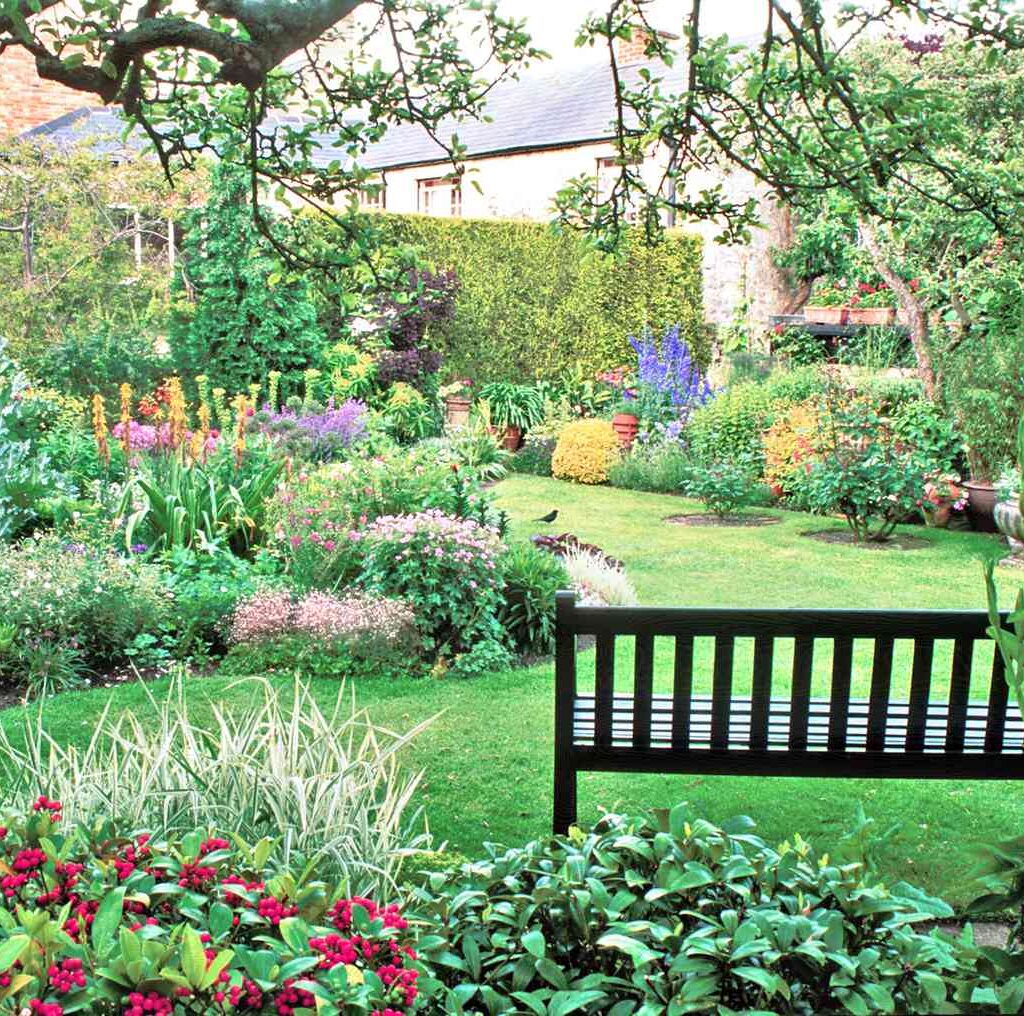
Walkways provide structure and connectivity in a landscape. However, without intentional design, they can feel plain or utilitarian. Flower beds along walkways:
- Add definition – Borders of plants and flowers frame the walkway, giving it shape and balance.
- Create rhythm – Repetition of plants and colors draws the eye forward and encourages exploration.
- Offer sensory appeal – The combination of textures, scents, and colors creates an immersive experience.
- Boost curb appeal – Walkway flower beds immediately elevate the look of front yards and entrances.
- Guide movement – Proper design gently directs guests to the front door, patio, or garden feature.
By pairing beauty with function, walkway flower beds become more than decorative elements—they act as natural storytellers in your landscape.
Key Design Principles for Walkway Flower Beds
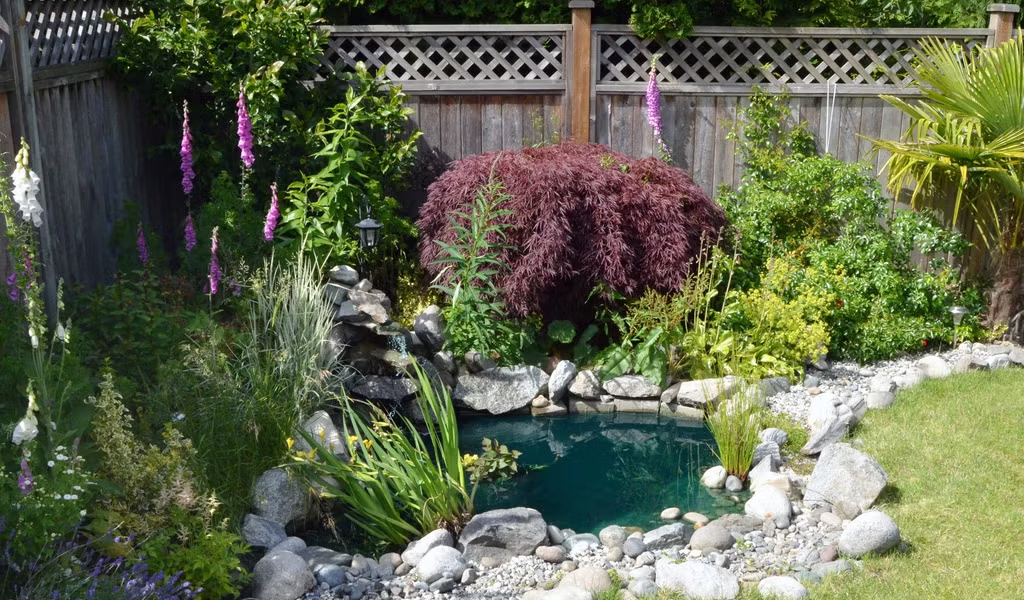
Designing walkway flower beds isn’t only about planting beautiful flowers. It requires balance, planning, and creativity. Below are some important principles:
1. Symmetry vs. Asymmetry
- Symmetrical designs on both sides of a walkway create formal, elegant appeal—perfect for traditional homes.
- Asymmetrical layouts feel more natural, relaxed, and modern. You can balance taller plants on one side with shrubs or ground covers on the other.
2. Scale and Proportion
Plant heights should complement the walkway’s width and your home’s architecture. Taller plants work well farther back, while low-growing flowers should border the edges to avoid blocking pathways.
3. Color Harmony
Using harmonious or complementary color schemes creates flow. For instance:
- A monochromatic palette (all shades of purple) feels serene.
- A warm palette (reds, oranges, yellows) feels energetic and inviting.
- A cool palette (blues, purples, whites) evokes calm sophistication.
4. Repetition and Rhythm
Repeating plant types or flower colors along the walkway creates rhythm, leading the eye toward the destination without visual clutter.
5. Seasonal Interest
Choose plants that bloom or provide color at different times of the year, ensuring your walkway looks beautiful in spring, summer, and beyond.
Types of Walkway Flower Bed Designs
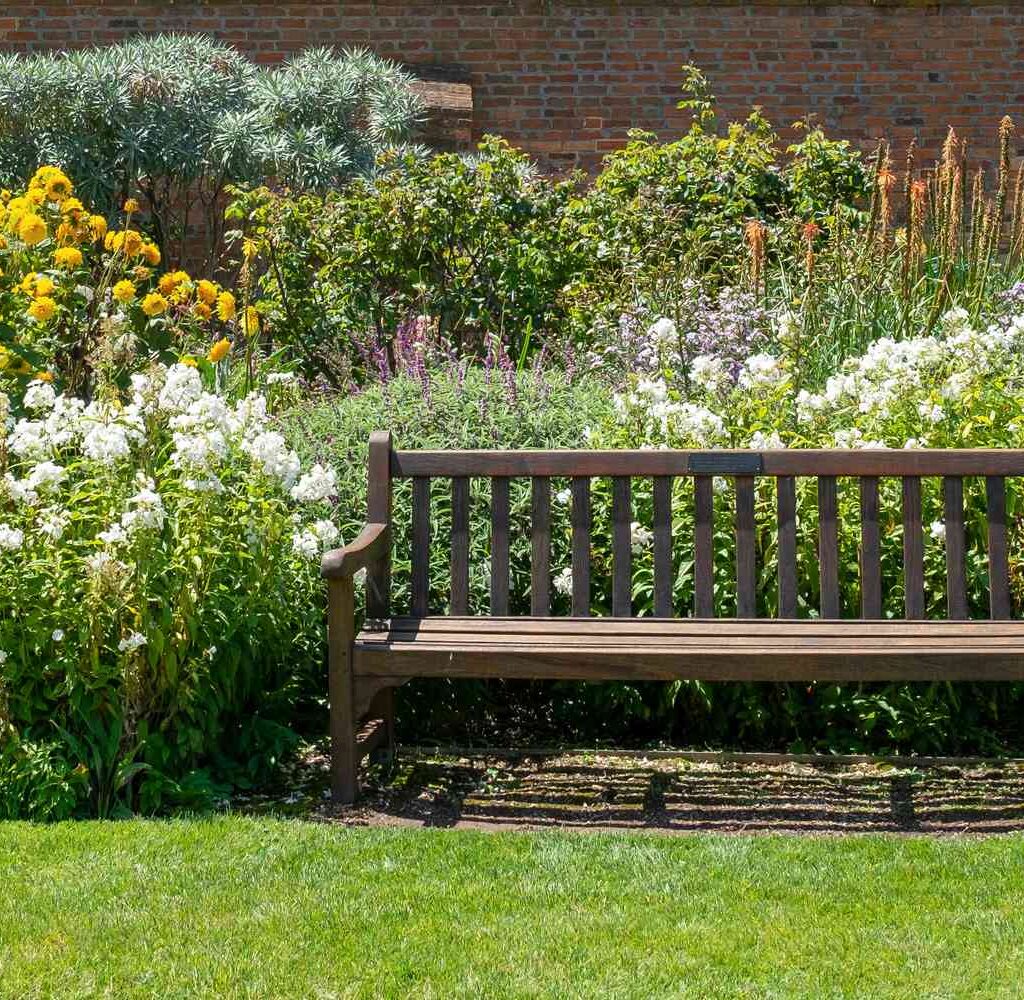
Here are popular styles you can adapt depending on your taste, home, and garden space:
1. Classic Border Beds
Border beds are narrow strips along both sides of the walkway, planted with low-growing flowers like petunias, pansies, alyssum, or edging plants such as boxwood. They create neat, crisp lines and are ideal for formal homes.
2. Cottage-Style Walkway Beds
For a romantic, whimsical look, cottage-style beds incorporate a mix of flowers in varied colors, sizes, and textures. Think roses, foxgloves, lavender, daisies, and salvia spilling gently over the walkway edges.
3. Curved and Layered Beds
Rather than straight borders, curved walkway beds soften the hard edges of paths. Layer plants by height—tallest in the back, medium in the middle, shortest along the edge—to create a lush, tiered effect.
4. Stone-Integrated Walkway Beds
Natural stones or pebbles mixed with flower beds add earthy charm. Use creeping plants like thyme, sedum, or creeping Jenny to grow between stones, softening their look while guiding the eye forward.
5. Modern Minimalist Beds
For contemporary homes, use sleek edging materials and plant low-maintenance species like ornamental grasses, hostas, or succulents. A limited palette of whites and greens enhances the clean aesthetic.
Best Plants for Walkway Flower Beds
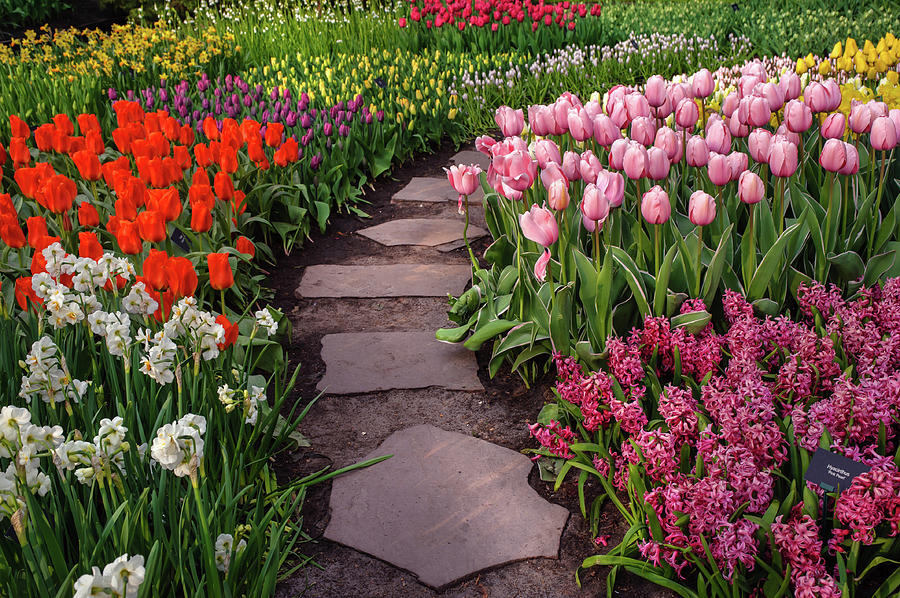
The plant selection will determine not only beauty but also functionality and maintenance. Here are some excellent options categorized by purpose:
Low-Growing Edging Plants
- Alyssum
- Creeping thyme
- Marigolds
- Lobelia
- Dusty miller
Medium-Height Plants (Mid-Layer)
- Geraniums
- Lavender
- Daylilies
- Coneflowers
- Salvia
Taller Plants for Back Layers or Corners
- Hydrangeas
- Roses
- Hollyhocks
- Ornamental grasses
- Butterfly bush
Fragrant Options for a Sensory Walkway
- Jasmine
- Lavender
- Sweet alyssum
- Dianthus
- Gardenia
Evergreen or Year-Round Structure
- Boxwood
- Dwarf junipers
- Hostas (in shaded areas)
- Heuchera
Combining these plant groups ensures year-round interest and a balanced design.
Practical Tips for Building Walkway Flower Beds
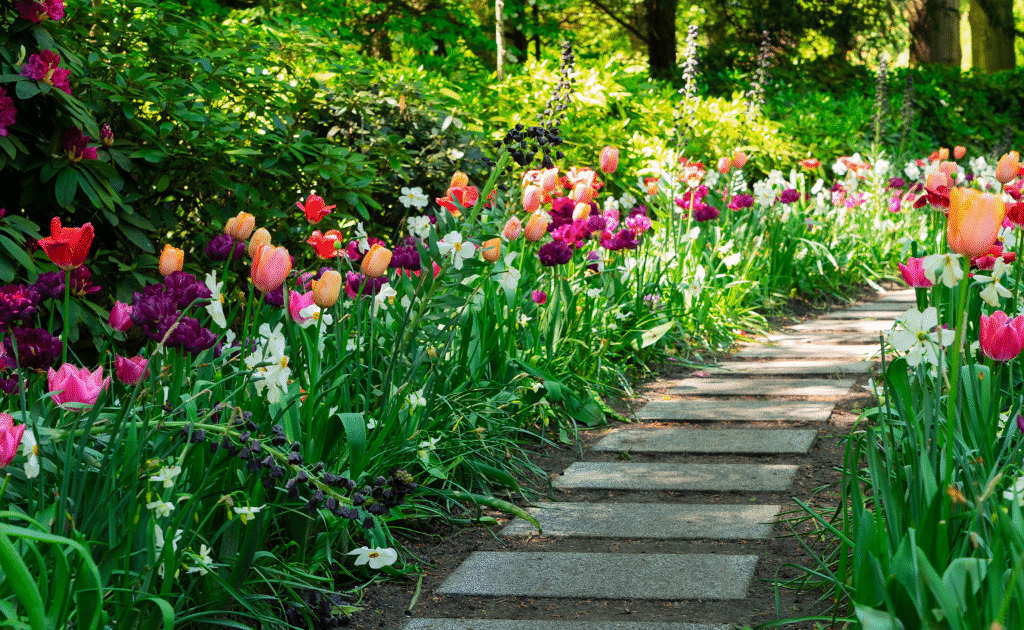
Designing and planting is exciting, but maintenance and practicality are equally important. Here are some helpful tips:
- Choose the right width – Flower beds should be proportional to the walkway and house façade. Too narrow may look sparse; too wide may overwhelm the path.
- Ensure proper spacing – Overcrowding can cause plants to compete for nutrients and spill excessively onto the walkway.
- Use mulch or stones – These help retain soil moisture, reduce weeds, and add a clean look.
- Consider irrigation – Installing drip irrigation or soaker hoses keeps plants healthy without overwatering.
- Mix perennials and annuals – Perennials provide a long-lasting backbone, while annuals bring seasonal bursts of color.
- Mind the lighting – Match plants with the sun exposure of the walkway. Shade-loving hostas won’t thrive in full sun.
- Keep safety in mind – Avoid thorny plants or ones that spill too far onto the walkway, as they can cause discomfort or tripping hazards.
Creative Enhancements for Walkway Flower Beds
Adding extra features can make walkway flower beds even more eye-catching:
- Lighting – Solar-powered path lights or low-voltage fixtures highlight flowers and provide safety at night.
- Ornamental edging – Stone, brick, or metal edging adds structure and elegance.
- Garden décor – Small statues, birdbaths, or decorative stakes tucked among flowers add charm.
- Color contrast – Use foliage plants with striking leaves (coleus, hostas, coral bells) to complement blooming flowers.
- Framing entrances – Taller plants or shrubs at walkway entrances act as “gateways,” welcoming guests beautifully.
Walkway Flower Beds for Different Spaces
Front Yard Walkways
Front yard paths benefit from neat, symmetrical designs. Use classic border beds with colorful annuals to impress visitors instantly.
Backyard Garden Paths
These can be more playful and natural. Cottage-style beds or curved designs with herbs and wildflowers feel relaxed and inviting.
Narrow Side Paths
Stick to compact, low-maintenance plants like creeping thyme or dwarf boxwood. Vertical features like trellised vines can save space while adding beauty.
Conclusion
Walkway flower beds are more than a decorative addition—they’re functional guides that transform simple paths into engaging journeys. By using thoughtful design principles, the right plants, and creative enhancements, you can craft walkways that are as inviting as they are beautiful. Whether your goal is a formal, symmetrical path lined with elegant blooms or a natural, free-flowing cottage-style walkway bursting with color, the possibilities are endless.
The key lies in balance—choosing plants that thrive in your climate, designing with proportion in mind, and maintaining seasonal interest. With careful planning, your walkway flower beds won’t just guide the eye—they’ll capture the heart of every guest who steps into your garden.
